Linoleum electric underfloor heating: system advantages and installation instructions
To create a comfortable temperature in the room, various types of heating are used, among which the warm floor, powered by electricity, gained particular popularity. Such a system is compatible with various floor coverings, among which laminate, linoleum, ceramic tiles and even carpet.
If your plans include making an electric floor heating under linoleum, then this is a completely feasible idea. And we will tell you how to put it into practice.
The content of the article:
What is good electric underfloor heating?
In the cold season, the issue of space heating becomes more relevant. The electric floor system is able to heat the room evenly and create the most favorable living conditions.
The temperature at the floor and under the ceiling with such heating has a slight difference, and the ability to adjust the temperature further expands the possibilities of using electric heating.
The advantages of an electric underfloor heating include the fact that such a system does not dry out the air in the room. Moderate air humidity important especially for people with respiratory diseases. During activity in the room, as well as during sleep, the airways will not dry out.
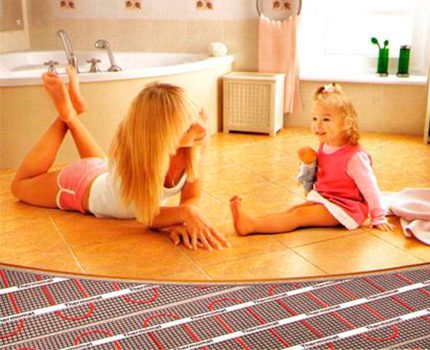
From an aesthetic point of view, electric floor heating is the optimal solution. It is completely invisible, and it does not have to be masked to create a harmonious interior. The system is laid under the floor, so it does not occupy usable space in the room.
Electric floor heating can act as the main source of heat in the winter months, and can be auxiliary.

The advantages also include the fact that electric heating saves about 25-30% of standard costs on the main heating source. And complete safety for humans makes such a system universal.
What is needed for optimal performance?
First of all, for your floor heating to work flawlessly, you need uninterrupted electricity. If your locality often experiences power outages, then additional equipment will be needed for electric heating.
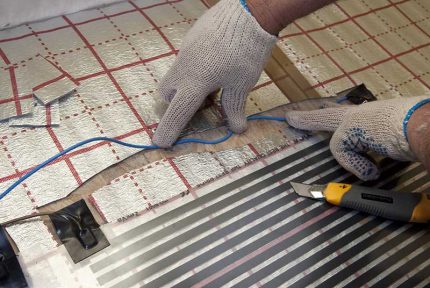
Particular attention should be paid to the installation process.
You can use one of the options:
- hire specialists who install an electric floor heating system quickly and efficiently;
- understand the topic and do this business yourself.
In the second case, it is necessary to understand the specifics of working with each type of floor covering, which determines how the installation of the floor heating system will proceed. In particular, work with installing an electric underfloor heating under linoleum should take place according to certain rules.
Features of installing an electric floor under linoleum
Infrared electric underfloor heating is the best option for linoleum from all types of floor heating. It does not require pouring a cement screed, which is required for laying an electric or water cable under the floor covering.
Ideal for linoleum infrared film, since it is thin enough and will not be felt under the main coating. In addition, linoleum requires special thermoregulation to maintain its structure, which successfully provides an infrared warm floor.

If linoleum is exposed to high temperatures, it can:
- change color;
- become more elastic, which will lead to tears;
- emit an unpleasant odor and harmful fumes;
- deform.
It is better to leave work with electricity to specialists, since the correct calculation of materials will be required here, and the work itself may not be possible for you. The rest of the work requires less preparation, so you can cope with it without problems.
Precautions
Before you start installing STP under linoleum, you need to remember the basic safety rules when working with electricity:
- installation begins only after a power outage;
- You cannot test the system if you have not checked the quality of isolation of all channels;
- infrared film can not be superimposed on each other;
- temperature value should not exceed 30 degrees so as not to overheat the coating.
Observing the above norms, you can avoid accidents, as well as damage to the system and linoleum.
It is important to remember that for installation you need a heat-reflecting coating, which is laid under linoleum. If the material is made using aluminum foil, then its use is strictly prohibited!
Selection of the right materials
For the installation you will need the necessary amount of infrared thermal films, insulation, temperature sensors, temperature controllers, wiring, heat-reflecting material, linoleum and other building materials.
Linoleum, which will be laid on top of an electric underfloor heating, must have special technical characteristics.The main indicator is the thickness of the material.
Too thin linoleum can change its structure due to constant exposure to high temperature, also such a material can be deformed due to uneven surfaces and take an ugly appearance. A denser coating will demonstrate worse thermal conductivity, but its structure will not change.
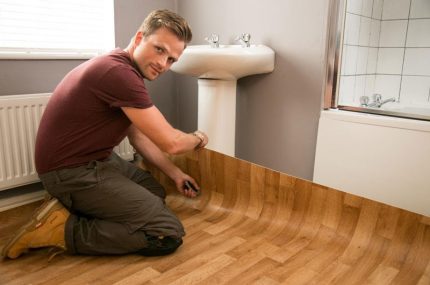
Before fixing linoleum, you just need to lay it on the floor for a while and turn on the electric floor heating system. Then the material will warm up, take a more natural form, will straighten out, after which it can be fixed.
Installation instructions infrared floor
An infrared heating system is the best option for flooring such as linoleum.
The first stage of installation is to establish the boundaries where floor heating will be laid. Places under furniture and household appliances should be immediately excluded. In order to have fewer points where the wires will be connected, the film is laid out along the entire length of the room.
Electrical cables can pass under the floor and must be less than 5 cm from the infrared film. If this is a pipe or fireplace - then at least 20 cm.
The next step is cutting the film into heating strips. They are designed so that the internal structure of the infrared system is not disturbed. When the film is divided into parts, contact clamps are attached to it (they should be located in the place of the two-layer film and copper strips through which current flows). A grommet is inserted into the hole using a hammer or other improvised means.
Next, isolation of sections of infrared contact strips is made. Copper wires are drawn to the tip, clamped and insulated with a waterproofing strip. The elements of the film are mounted parallel to each other so that they in no case overlap.
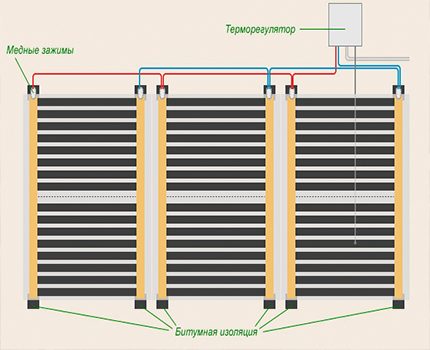
There are situations when the total power of the system exceeds the limit of 3500 watts. In this case, you will need to mount a separate wiring of electric cables with an autonomous switch to remove the heavy load from the main wiring. It is important to use a magnetic starter.
After working with the film, the insulating material is laid with a heat-reflecting layer. Such material is attached to the tape. The heating elements are laid on top. They should be located with copper stripes down.
Avoid touching the two bands, as this will cause the system to overheat at the point of contact. To fix the heating elements, they often use a stapler or scotch tape, less often furniture nails. Such fastening methods will guarantee that in the future the strips will not shift and will not fall on one another.
Rules for laying heating elements:
- attached only to a transparent border;
- the heating element must be located at a distance of at least 0.5 cm from the area through which the copper wiring passes;
- main wires should be laid under the baseboard;
- so that the insulation lies on the same level with the floor, it is necessary to make cutouts for thickened areas.
After the work stages have been completed, the system needs to be checked in detail. First of all, it is worth paying attention to the quality of insulation of wires and their fastening. Next, you need to exclude the possibility of short circuits in the system, and if necessary, fix the problem.

Next, you need to attach the temperature sensor to the thermostat. This procedure is carried out using adhesive tape, and fastening is performed in a place where there is no heating. Then the thermostat turns on and waiting a small amount of time to figure out if it is functioning properly. If everything is done correctly, then with your hand you can feel the emerging heat.
If the whole system is working properly, then it is covered with a special material that regulates the generation of steam. The material is attached to the tape. On top is laid sheet plywood or Fiberboard. They are attached to the base with screws and perform the function of leveling the floor.
The plywood should be positioned so that its mounts fall on the transparent part of the infrared film and do not touch the copper gasket. Fasteners should be located no closer than 0.5 cm from the insulated parts of the film through which electricity passes.
Depending on the base on which the warm floor is laid, the technology for its installation may differ slightly:
Having picked up linoleum with optimal technical characteristics (moderately dense, sufficiently elastic, which is not subject to deformation due to high temperature), it is worthwhile to correctly lay it, eliminating the options for an uneven surface, which can result in the end.

Next, fastening is carried out using adhesive mastic or double-sided tape. Mastic in this case will be a priority, since with it the floor will be more even.
Linoleum must necessarily have good thermal conductivity, while being very durable and resistant to fading. A good example is multilayer polyvinyl chloride linoleum, which is not afraid of exposure to heat.
Conclusions and useful video on the topic
Even more useful information about various types of warm floors can be found in the videos below.
Useful materials for choice:
The nuances of mounting a film type:
It is possible to make electric STP under linoleum with your own hands, the main thing is to observe safety measures and perform work in the desired sequence. It is better to entrust electric work to specialists, but laying of the upper layers of the system can be performed without outside help. Be patient, with the necessary materials, and you will comfortably spend the cold season, regardless of the general heating system and other factors.
If you had to do it yourself installation of underfloor heating under linoleum, please share your own experience with visitors to our site. Perhaps you know the intricacies of installation which we did not mention in this material? Leave your comments in the communication block, which is located under the article.

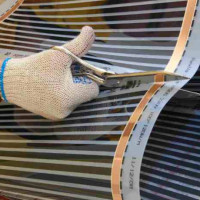 How to make a film underfloor heating under linoleum: instructions for laying an infrared heating system
How to make a film underfloor heating under linoleum: instructions for laying an infrared heating system  How to choose an electric floor heating: guidelines for choosing the optimal heating system
How to choose an electric floor heating: guidelines for choosing the optimal heating system 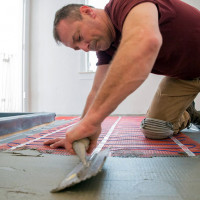 How to make a warm floor under linoleum on a concrete floor: detailed instructions
How to make a warm floor under linoleum on a concrete floor: detailed instructions 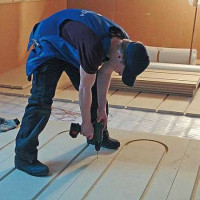 Heated floor under linoleum on a wooden floor: step-by-step installation instruction
Heated floor under linoleum on a wooden floor: step-by-step installation instruction 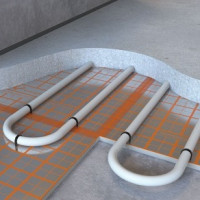 How to make a water heated floor under linoleum: design rules and an overview of installation technology
How to make a water heated floor under linoleum: design rules and an overview of installation technology 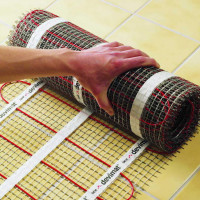 DIY electric underfloor heating: device, installation technology and wiring diagrams
DIY electric underfloor heating: device, installation technology and wiring diagrams  How much does it cost to connect gas to a private house: the price of organizing gas supply
How much does it cost to connect gas to a private house: the price of organizing gas supply  The best washing machines with dryer: model rating and customer tips
The best washing machines with dryer: model rating and customer tips  What is the color temperature of light and the nuances of choosing the temperature of the lamps to suit your needs
What is the color temperature of light and the nuances of choosing the temperature of the lamps to suit your needs  Replacement of a geyser in an apartment: replacement paperwork + basic norms and requirements
Replacement of a geyser in an apartment: replacement paperwork + basic norms and requirements
They put a warm floor in the living room, the whole family liked it, a necessary thing, especially in a private house. The team of masters did, since I don’t know much about this. Of course, the electric floor will cost more, but there is the opportunity to include it at any convenient time, whether it be summer or the beginning of autumn.In general, everything suits us, especially considering the fact that we are thermophilic.
A good idea: first let linoleum rest on a working warm floor. It can stretch under the influence of heat, and if you first fill it under the baseboard, then deformation can begin. It's good that I read it before I started work.
In principle, there is nothing complicated in laying an infrared film, it is easier than pipes, but such small tricks come in handy.
Isn’t it dangerous for your health to lay linoleum on warm floors? He will emit chemistry when heated - formaldehydes, etc.?
Hello. I am an opponent of such materials and try to use them in the smallest possible amounts in everyday life. In fact, and it has long been proven, colossal damage to health is caused by any PVC finishing materials. Stretch ceilings (even supposedly fabric, in fact they are not made of fabric), plastic panels, cheap low-quality linoleum and so on. Although they are used everywhere and everywhere they advertise their environmental friendliness. Everything has long been proven, even with the example of the owners of such repairs. Chlorine, toluene, phenol, heavy metals released into the air for years ... As for GOSTs ... well, Rollton also has GOST.
However, no one bothers to buy ecolinoleum or marmoleum, although it is expensive and its laying on a TP is heat-conducting irrational.